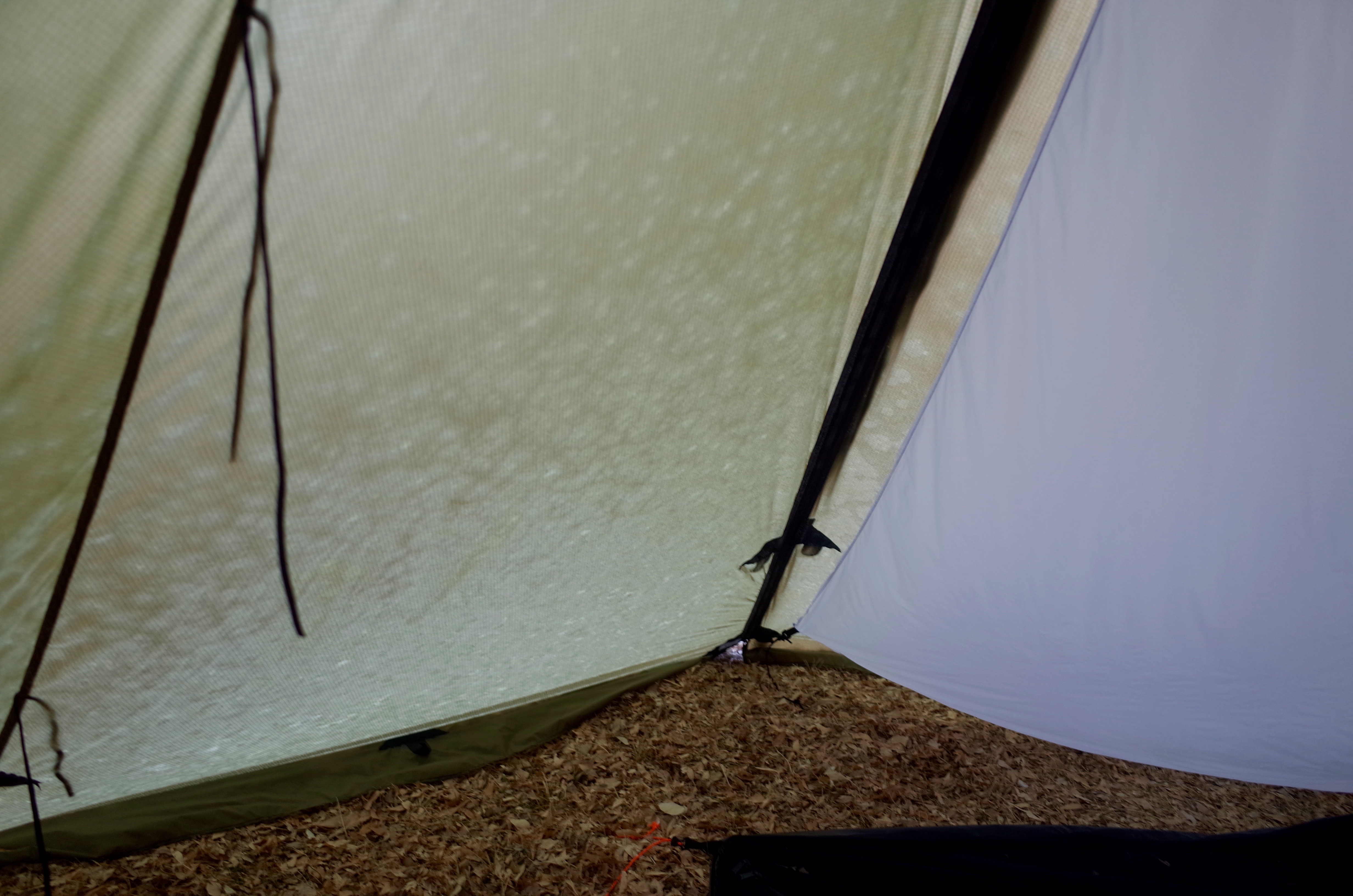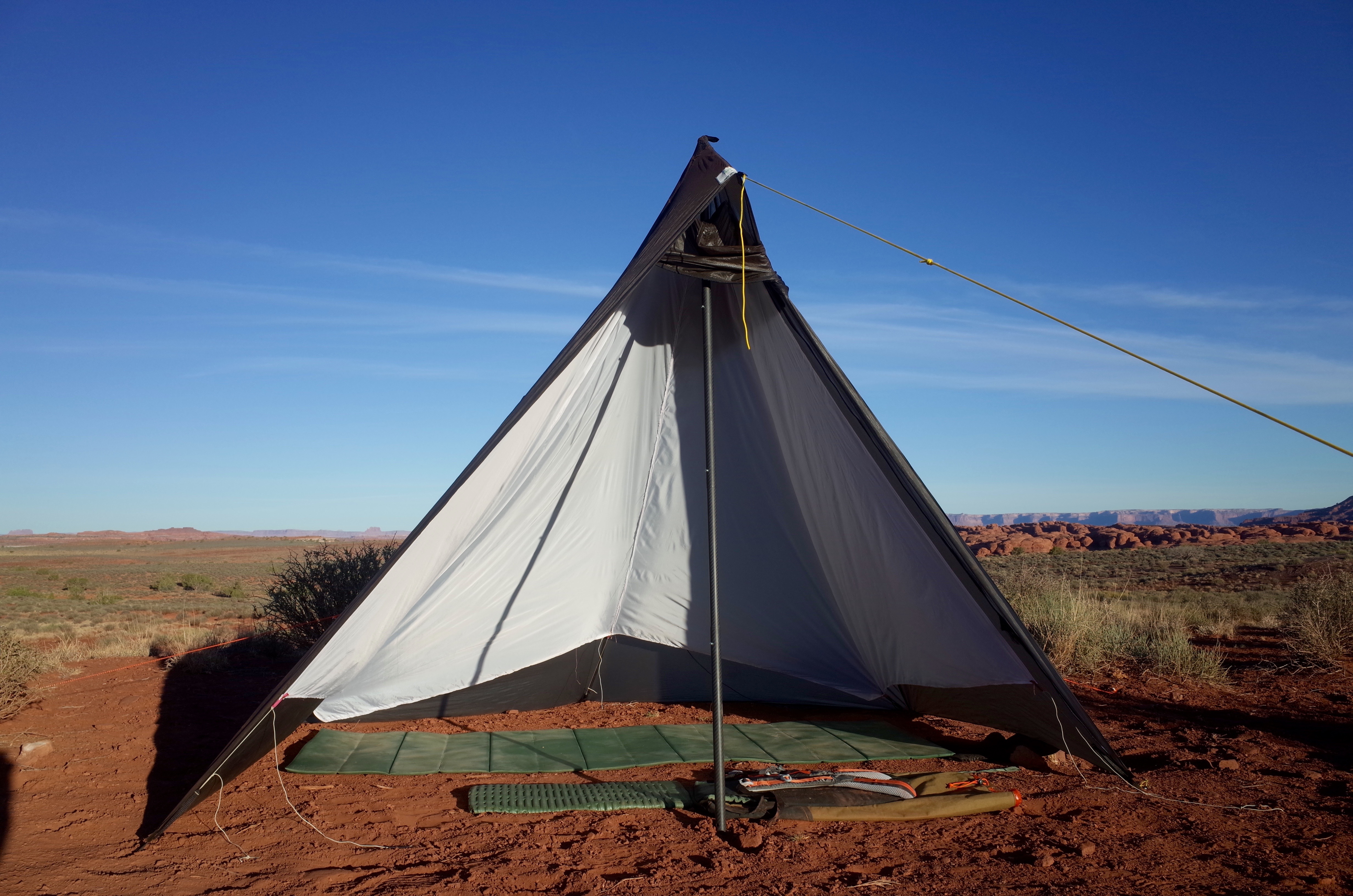The two biggest complaints folks have with floorless pyramid shelters are lying with the creepy crawlies in the dirt, and rubbing up against condensation on the walls. The first complaint is largely, though not entirely, a matter of changing context and expectation. The second is a serious issue that can be both a nuisance and a hazard, and I would suggest is right now inadequately addressed by virtually all makers of backpackable mids (read: those with a canopy weight of 32 oz or less).

There’s an easy though not definitive solution to the condensation issue: liners. Unless they are truly enormous vents don’t do much to reduce condensation in mids. If there is enough air circulation (i.e. wind) to make them effective condensation is usually not so bad anyway. Ditto for the common tactic of raising the hem well off the ground. The weather shedding shape which makes mids so effective in severe weather just doesn’t do well promoting air circulation. Change the design to make that happen, and you’ll inherently compromise weather resistance. Mids are a good quiver of one because they’re geared towards the worst weather most backcountry travelers will experience (ask Jaakko about shelters for polar travel), but when many people buy a mid or tipi, they overpurchase.
Back to liners; my first experience was early this year in a Seek Outside 4 man tipi, and it was a true head slapper moment. A simple half liner of simple, non-coated nylon turns half your mid into a double walled tent. As shown below, condensation (or frost) collects on the inside of the silnylon, while the liner (and thus the sleeping bag or head of anyone who rubs against it) stays dry. Dead simple, pretty darn light, and effective. The dead air space created also adds a small amount of warmth, though in windy conditions the deflection inherent in mids and the fact that a liner isn’t a true double wall largely erases that benefit.

So far as I can tell, half liners were invented (like modern PU and later silnylon tipis) by Patrick Smith, at Kifaru. Interestingly, this mention of liners says that Kifaru began their development when they started working with sil in 2003-2004, intimating that condensation is worse with a silicone coating. All my mid experience is post-sil, and I’d be interested in further thoughts or experience with that particular question.

In any case, the functionality of a liner is beyond question, which is why I made one for our Little Bug Out. Simple 1.1 oz uncoated, uncalendered nylon to maximize breathability while minimizing weight and cost. It doesn’t need to go all the way to the peak, nor all the way to the hem. This one required a bit less than 4 yards of fabric, as well as adding four loops, one of each seam, 10 inches below the peak. Total weight added, 5.5 ounces. It only impinges on the interior room a tiny big, and not having to keep away from the walls adds, rather than takes away from, the functional space. I’d like to see a few companies, ideally with folks who do better with >30 inch seams than I do, offer something similar. They’re cheap and easy to make, and offer a more useful performance bump than the floors and bug nets which seem obligatory.
Mid devotees with a bit of sewing skill should try one out.
Leave a reply to Ed Tyanich Cancel reply